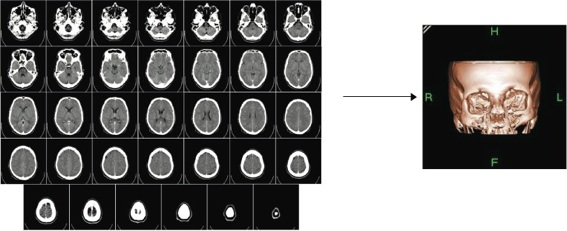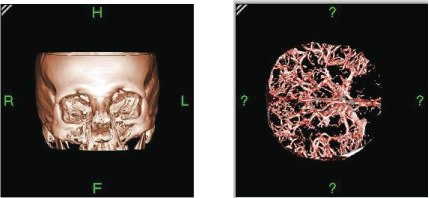BME 240 Spring 2009
Matthew Kornswiet
Three-Dimensional Rendering


Due to the tomographic nature of the computed tomography, it is possible to make a volume from “stacking” these slices on top of one another. The computer then fills in the spaces and the result is a volume that has a horizontal resolution the same as the transverse slices and a depth resolution the distance between slices when translating down the vertical axis of the body.
Figure 1: An array of two-dimensional cross sections from a normal CT scanner and the three-dimensional model created from the slices
There are many ways to render a three-dimensional object. The most common methods are surface rendering and volume rendering.
Surface rendering uses a threshold technique where if the intensity of the image changes rapidly the computer sets that value as visible and ignore the rest. This method is how the system detects the edges of the object it is creating. The result is a three-dimensional model that can be displayed on a computer screen.
On the other hand, volume rendering not only takes into account the edge of the object, but also takes into account its transparency. In this way, when the renderer is completed, the user can change his or her transparency level and see different levels of the anatomy.
Figure 2: The same three-dimensional model with different thresholding to be able to see different levels of the skull
A typical computed tomography scan can have around 200 slices. On a computer this usually computes to around 100 megabytes. On a fast computer, Pentium 3 with 1 gigabyte of ram, the rendering can take from a few seconds to a few minutes. From here, however, the user can rotate and move the model in real time.

